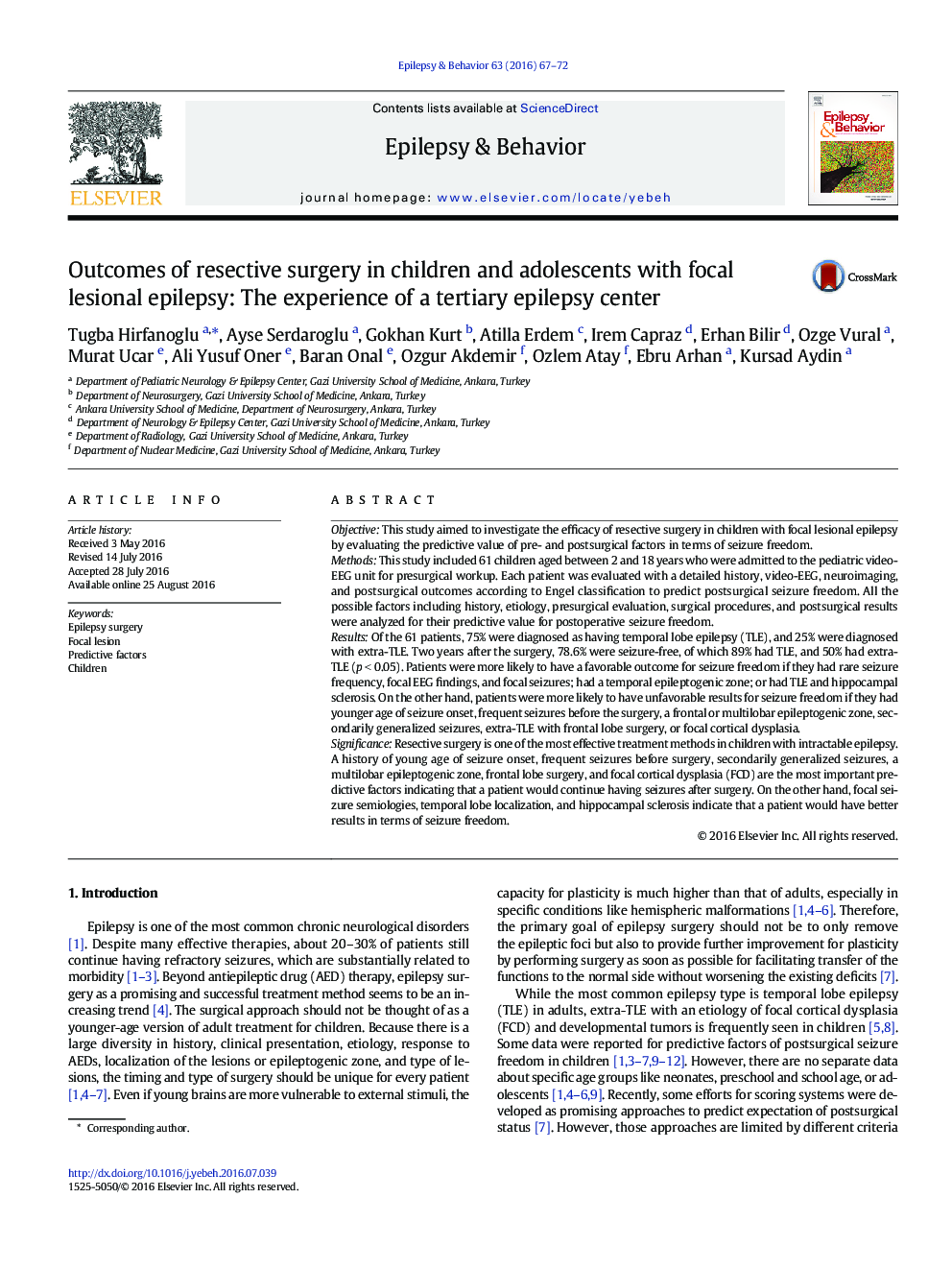| Article ID | Journal | Published Year | Pages | File Type |
|---|---|---|---|---|
| 6009720 | Epilepsy & Behavior | 2016 | 6 Pages |
â¢Resective surgery is one of the most effective treatment options in children with pharmaco-resistant epilepsyâ¢Debatable data were reported about predictive factors for postsurgical seizure freedom in children and adolescentsâ¢Focal EEG findings, temporal lobe localization, and hippocampal sclerosis has more favorable outcome after surgeryâ¢Young onset age, frequent seizures, frontal lobe localization, and FCD may lead to poorer seizure control after surgery
ObjectiveThis study aimed to investigate the efficacy of resective surgery in children with focal lesional epilepsy by evaluating the predictive value of pre- and postsurgical factors in terms of seizure freedom.MethodsThis study included 61 children aged between 2 and 18 years who were admitted to the pediatric video-EEG unit for presurgical workup. Each patient was evaluated with a detailed history, video-EEG, neuroimaging, and postsurgical outcomes according to Engel classification to predict postsurgical seizure freedom. All the possible factors including history, etiology, presurgical evaluation, surgical procedures, and postsurgical results were analyzed for their predictive value for postoperative seizure freedom.ResultsOf the 61 patients, 75% were diagnosed as having temporal lobe epilepsy (TLE), and 25% were diagnosed with extra-TLE. Two years after the surgery, 78.6% were seizure-free, of which 89% had TLE, and 50% had extra-TLE (p < 0.05). Patients were more likely to have a favorable outcome for seizure freedom if they had rare seizure frequency, focal EEG findings, and focal seizures; had a temporal epileptogenic zone; or had TLE and hippocampal sclerosis. On the other hand, patients were more likely to have unfavorable results for seizure freedom if they had younger age of seizure onset, frequent seizures before the surgery, a frontal or multilobar epileptogenic zone, secondarily generalized seizures, extra-TLE with frontal lobe surgery, or focal cortical dysplasia.SignificanceResective surgery is one of the most effective treatment methods in children with intractable epilepsy. A history of young age of seizure onset, frequent seizures before surgery, secondarily generalized seizures, a multilobar epileptogenic zone, frontal lobe surgery, and focal cortical dysplasia (FCD) are the most important predictive factors indicating that a patient would continue having seizures after surgery. On the other hand, focal seizure semiologies, temporal lobe localization, and hippocampal sclerosis indicate that a patient would have better results in terms of seizure freedom.
